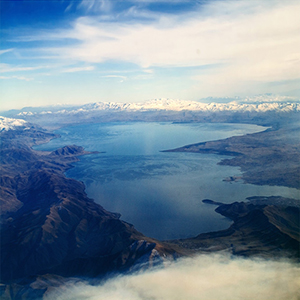Simulating thermal dynamics of the largest lake in the Caucasus region: The mountain Lake Sevan

All claims expressed in this article are solely those of the authors and do not necessarily represent those of their affiliated organizations, or those of the publisher, the editors and the reviewers. Any product that may be evaluated in this article or claim that may be made by its manufacturer is not guaranteed or endorsed by the publisher.
Accepted: 29 September 2021
Authors
Lake Sevan is the largest freshwater body in the Caucasus region, situated at an altitude of 1,900 m asl. While it is a major water resource in the whole region, Lake Sevan has received little attention in international limnological literature. Although recent studies pointed to algal blooms and negative impacts of climate change and eutrophication, the physical controls on thermal dynamics have not been characterized and model-based assessments of climate change impacts are lacking. We compiled a decade of historical data for meteorological conditions and temperature dynamics in Lake Sevan and used a one-dimensional hydrodynamic model (GLM 3.1) in order to study thermal structure, the stratification phenology and their meteorological drivers in this large mountain lake. We then evaluated the representativeness of meteorological data products covering almost 4 decades (EWEMBI-dataset: 1979-2016) for driving the model and found that these data are well suited to restore long term thermal dynamics in Lake Sevan. This established model setting allowed us to identify major changes in Lake Sevan’s stratification in response to changing meteorological conditions as expected from ongoing climate change. Our results point to a changing mixing type from dimictic to monomictic as Lake Sevan will experience prolonged summer stratification periods and more stable stratification. These projected changes in stratification must be included in long-term management perspectives as they will intensify water quality deteriorations like surface algal blooms or deep water anoxia.
Ethics Approval
Bardukh Gabrielyan, Scientific Center of Zoology and Hydroecology, Division of Natural Sciences, Yerevan, ArmeniaCollege of Water Conservancy, Shenyang Agricultural University, Shenyang, China
Hydrometeorology and Monitoring Center SNCO of the Ministry of Environment of the Republic of Armenia, Yerevan, Armenia
How to Cite

This work is licensed under a Creative Commons Attribution-NonCommercial 4.0 International License.






